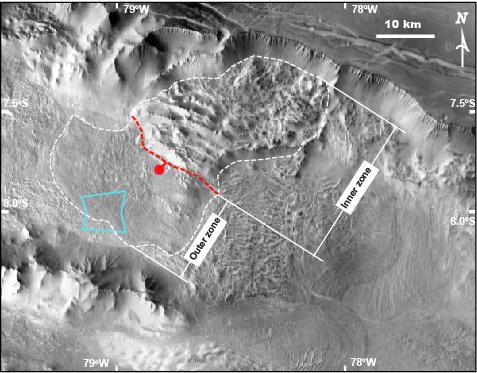We are undertaking a detailed structural analysis of a targeted portion of an Aphrodite fracture zone in order to understand the architectural evolution through time and space and, ultimately, to construct thermal models in order to gain insight into possible mechanisms of heat transfer on Venus. The target area (15S-20S/110E-124E), characterized by extreme density of faults and pit chains, encompasses over 700,000 km2. It is part of an extensive fracture zone that overlaps with focused coronae chains to the east,and splits into regional splays to the west,cutting highland crustal plateaus. Hybrid tectono-volcanic structures,change along strike from en echelon fractures, fractures, pit-‐chains, graben, leaky dikes, and canali. Widths range from 1 to >5 km; lengths exceed several 100 km; structure spacing ranges from 10’s of km to lineament overlapping, intersecting, or coalescing. Hybrid structures, which play a key role in transferring material to/from depth, both predate and postdate surface deposits.The fracture zone domain is the youngest regional domain in Aphrodite Terra, and extends ~2000 km in width and over 6000 km in length. The hybrid structures likely play a significant role in cooling reflecting contemporary mechanisms/processes.
Co-authors: David Tovar1, J.B. Swenson1, and I. López2, 1 University of Minnesota Duluth, 2 Universidad Rey Juan Carlos.


